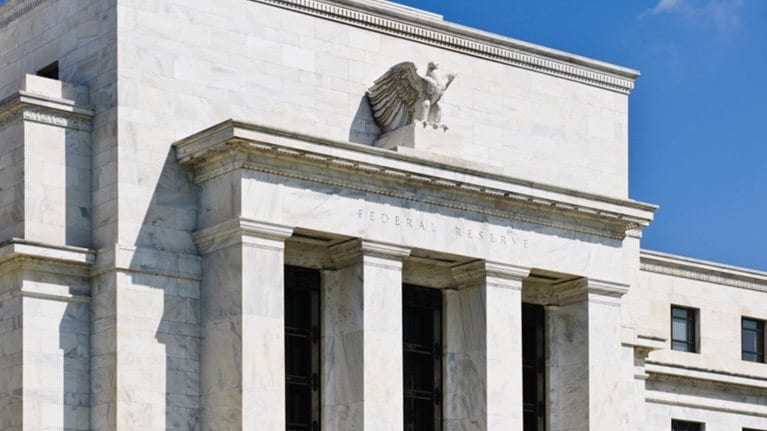The European Central Bank’s surprise cut to its interest rate last Thursday is just the latest evidence that the lengthy era of ultra-loose monetary policies is still firmly in place. Since the start of the crisis in 2007, the four central banks of the United States, the United Kingdom, the euro zone, and Japan have injected $4.7 trillion of liquidity into their economies, pushing interest rates to very low levels . The consensus is that these actions have raised GDP by between 1% and 3% and prevented a catastrophic failure in the global financial system.
Understanding at a micro level how such measures boost GDP is the key in understanding the impact of future central bank moves. Our contribution to this on-going debate suggests that growth might not have come from the classical channels of boosting corporate investment or consumer expenditure. Instead, the clearest impact from ultra-low interest rates appears to have come from enabling government expenditure, and possibly boosting housing construction.
Non-financial companies in the United States, the United Kingdom, and the euro zone have been large beneficiaries of low interest rates, saving $710 billion on their debt service costs between 2007 and 2012. However, companies have not lowered the hurdle rates they use to assess potential investment projects. Theoretically, the additional liquidity should have also made corporate borrowing easier. But credit is tight for some businesses. Many small companies in the United States and Europe—and even some larger ones in the periphery economies of the euro zone—can’t access lower-cost credit because they are reliant on bank loans for financing.
As a result, businesses have not been investing more. In the United States, net private non-residential investment fell by 80% as a percentage of GDP between 2007 and 2009. Although it has recovered since then, US business investment is still at its lowest level as a share of GDP since at least 1947. Investment in Europe is similarly weak.
Another way that ultra-low interest rates could stimulate GDP is through consumer spending. But households in the United States, the United Kingdom, and the euro zone have lost a combined $630 billion from low interest rates as lower interest earned on deposits and other fixed income investments has outweighed lower interest payments on debt. Younger households, which have tended to be net borrowers, gained while older households, net savers, lost.
Rising asset prices prompted by QE could potentially offset this interest income effect for households. But the asset price story is somewhat less straightforward than many have assumed. Bond prices have clearly risen. But we find little evidence that QE has boosted equity markets. Although stock prices rise and fall in response to central bank announcements on QE programmes, these price changes dissipate in the following weeks. Price-earnings ratios and price-book ratios are no higher than long-term averages. Perhaps, a rational-expectations investor might already have built future rising interest rates into their valuations.
House prices may be higher due to low interest rates, most clearly in the United Kingdom but less so in the United States which still faces strong headwinds from an over-supply of housing. Even if house prices are higher due to QE, there has to some scepticism about whether that has translated into additional consumption given that US housing prices are still far below their peak. Moreover, tighter lending standards have made it difficult to borrow against the higher house values.
So it’s not clear that QE has boosted household consumption. Indeed, in the United States, the personal saving rate is near 5%, much higher than the pre-crisis level.
So where has the positive impact on growth in advanced economies come from if not business investment and household expenditure?
Uplift in housing construction is one possibility. New US housing starts have been rising from the trough, and it is plausible that the housing sector recovery would have been slower without ultra-low interest rates.
But the clearest impact of low interest rates might be through government spending. By the end of 2012, governments in the United States, the United Kingdom, and the euro zone had collectively benefited by nearly $1.4 trillion compared with 2007 through lower interest payments on their debt.
The lion’s share of that—$900 billion or almost the equivalent of one year’s annual federal deficit at the peak of the crisis—went to the US government. The government of the UK benefited to the tune of $120 billion and euro zone governments collectively by $360 billion. In addition, these governments have benefited from the profits earned on expanded central bank balance sheets, worth some $145 billion for the US, $50 billion for the UK, and $5 billion for the euro zone. This windfall for governments has enabled more spending (or less borrowing). Austerity would have had to be tougher without QE and ultra-low interest rates.
Looking at the distributional impact of QE sheds light on the risks we may face in the future if and when these policies are unwound. We calculate that governments could face up to a 20% rise in their debt-service costs if interest rates rise back to 2007 levels—and rates even then were not very high. For the United States, this would add $75 billion annually to debt interest payments. Household savers may benefit, but the housing recovery could suffer.
The financial crisis of 2007/08 unleashed an unprecedented set of measures by the world’s major central banks. These policies no doubt prevented a worse disaster, but they have also created an uncharted interest rate environment. The transition back to normal could be bumpy.
This article originally ran in The Economist.


